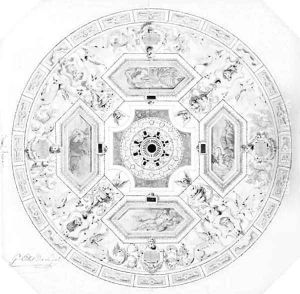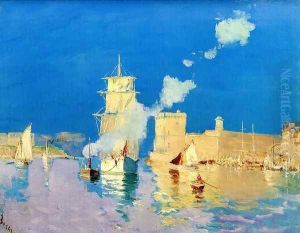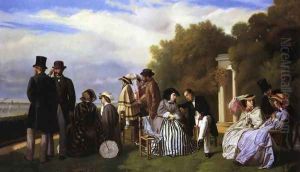Alexandre-Denis Abel de Pujol Paintings
Alexandre-Denis Abel de Pujol, born on February 30, 1785, in Valenciennes, France, was a neoclassical painter who found himself at the crossroads of the revolutionary fervor and the Napoleonic era in French history. He was the illegitimate son of the nobleman Alexandre-Denis-Joseph Mortry de Pujol, Baron of the Empire, and thus his path to recognition in the art world was fraught with the complexities of his parentage. Abel de Pujol studied under the tutelage of prominent artists such as Jacques-Louis David, whose neoclassical style had a significant influence on his work.
Abel de Pujol's career was marked by his dedication to large-scale historical and mythological paintings, which were popular during his time. He won the Prix de Rome in 1806, an esteemed scholarship for art students, which allowed him to study at the French Academy in Rome from 1807 to 1811. His time in Italy further solidified his classical approach to painting and upon his return to Paris, he quickly became part of the artistic elite.
He received numerous commissions for public and private works, including religious and historical murals for various churches and buildings in Paris and other French cities. One of his most famous works is the ceiling painting 'The Apotheosis of Saint Genevieve' in the Panthéon in Paris, completed in 1821. Abel de Pujol was also a respected professor at the École des Beaux-Arts in Paris, where he taught many students who would go on to become notable artists themselves.
Abel de Pujol's style, though rooted in the neoclassical tradition, also showed an inclination towards the burgeoning Romantic movement, which was characterized by a focus on emotion, individualism, and the sublime. He often used dramatic lighting and strong contrasts of color in his work, which added to the emotional intensity of the scenes he depicted.
Despite his success during his lifetime, Abel de Pujol's reputation diminished after his death in 1861, as the art world moved on to new movements like Impressionism and Post-Impressionism, which heralded a shift away from the classical styles he espoused. Nevertheless, Abel de Pujol's contribution to French art is recognized by historians, and his works can still be seen in various museums and public spaces throughout France. He remains a figure of interest for those studying the transition from neoclassical to romantic art in the early 19th century.


